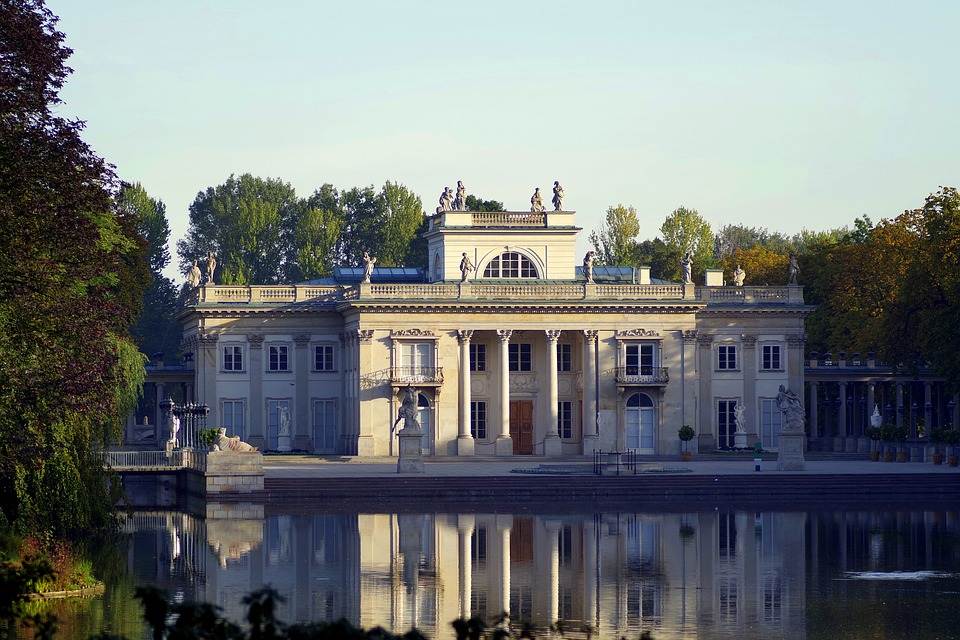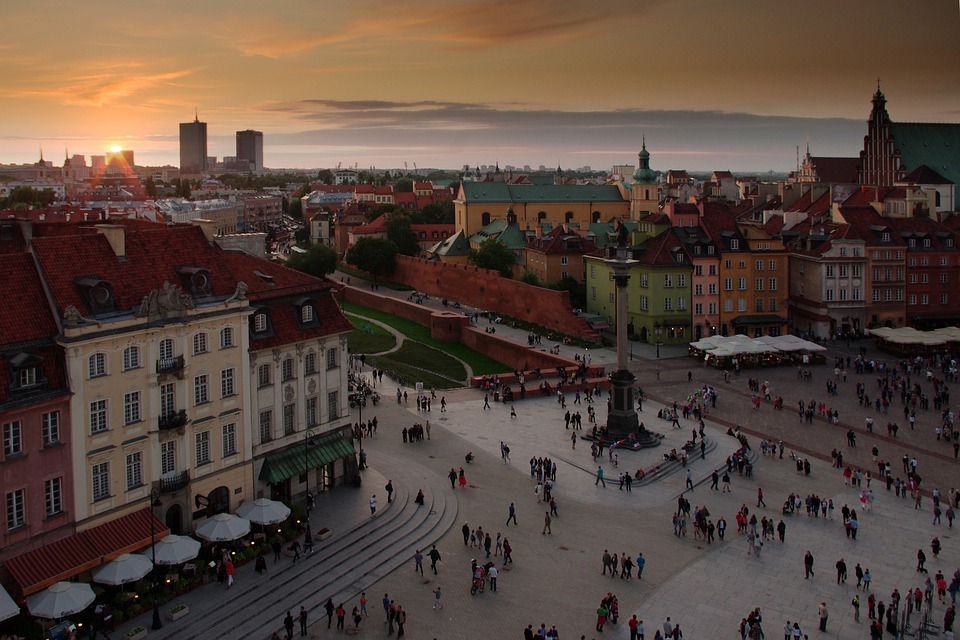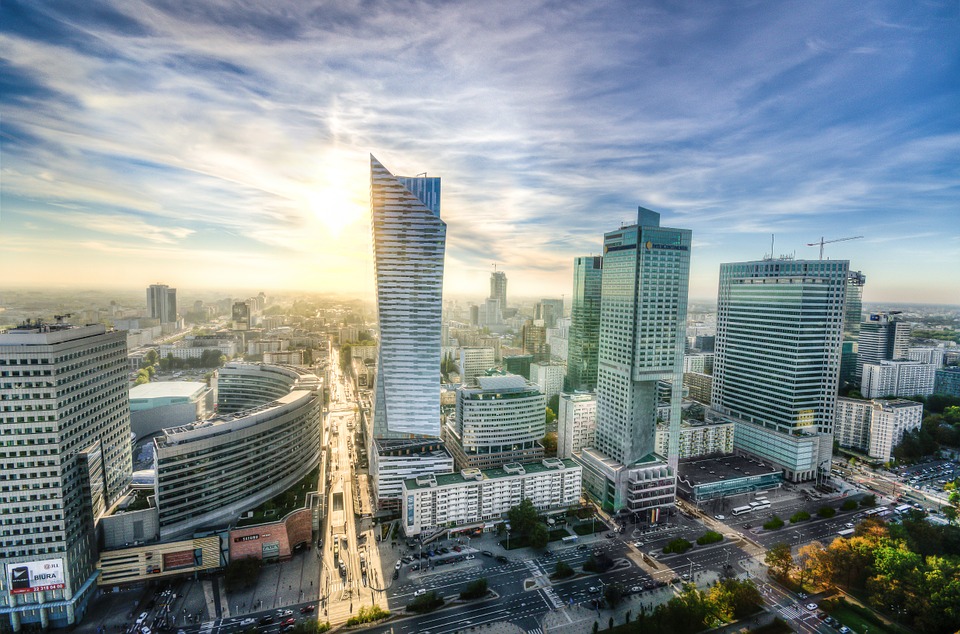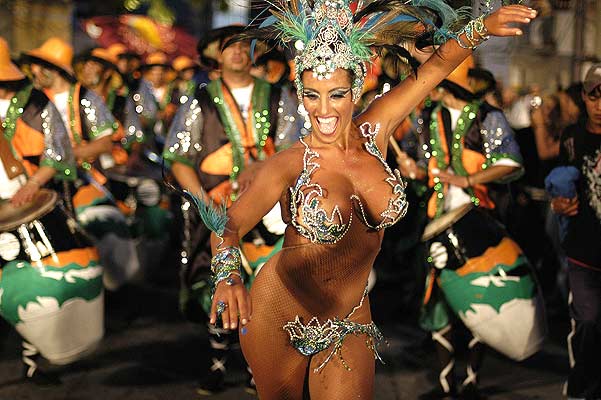But that’s the first big surprise that should await anyone who arrives in Poland’s capital – Warsaw. Yes, the city does have more than its fair share of unappealing concrete, but that’s balanced by the enormous number of parks.
Parks and Palaces
And they’re not piddling little parks, either. They sprawl across vast belts. Of them, Lazienki Park is the jewel in the crown – it’s a perfect mix of wild and beautifully tended. It’s the first stop on Viator’s Half Day Sightseeing Tour of Warsaw and it becomes obvious why Varsavians flock here in numbers at the weekends.
The Belvedere Palace marks the starting point of a delightful ramble past a number of other royal buildings. One of Warsaw’s peculiarities is the number of palaces that can be found in its parks. Our guide explains this as being part of the peculiar royal system that Poland once had. For quite some time, kings were elected from amongst the other nobles (although, in reality, it tended to be whichever person an overbearing foreign power wanted).
The kings and their families would live in the Belvedere Palace, but when the king died, the family was suddenly homeless due to the lack of hereditary system. Therefore, whenever someone got on the throne, they’d spend big money on getting a palace of their own that could be passed down through the generations.

Lazienki Park used to be a royal hunting ground, but King Stanislaw August turned into a giant vanity project, filling the park with follies. The Palace on the Water is the most beautiful, looking out onto an artificial lake where you can go for a gondola ride or just watch the ducks. In the palace grounds are numerous copies of famous Greek and Roman sculptures, with many more are scattered throughout the park.
One focal point is the island amphitheatre, which is designed to look like a Greek ruin. The stage is separated from the audience seating by a small moat, and plays are often put on here during the summer. But that’s not really what people come to see – the real shows are put on by the numerous peacocks that strut around the seats, proving that the old sayings about them preening aren’t exactly unwarranted. Apparently they sleep on the island stage to keep themselves safe from foxes at night.
The Old Town
Just as pretty as Lazienki Park is Warsaw’s Old Town. It’s as charming as any in Europe, with cobbled streets lazily meandering between pastel-shaded buildings and old merchant houses painted with distinctive motifs, patterns and murals. Buskers play folk music on virtually every corner and terrace cafés and restaurants hum with tourists the moment the sun so much as threatens to rear its head. Ice cream stalls, galleries and souvenir shops are plentiful and the squares are essentially giant photo opportunities.
Around the edge of the Old Town runs the old city wall, fashioned out of red brick and culminating in the marvelously imposing Barbican. This was – and still is – the entrance to the Old Town, although you’re unlikely to encounter enemy archers these days if you try and make your way in without asking.

The Old Town is justifiably on UNESCO’s World Heritage list, having been added to it in 1980. But the reasoning behind this isn’t so much the beauty, but the extraordinary efforts in reconstructing it after the Second World War.
Throughout the Old Town, you’ll find a smattering of signposts that show the post-war damage. It was almost completely destroyed as the Nazis took their brutal revenge on the rebellious Poles. It was essentially a giant rubble heap that had to be painstakingly pieced back together.
The Royal Castle
The best example of this is the Royal Castle, which was left pretty much as a single wall guarding a desolate wasteland. It is now properly restored and, while it looks cute from the outside, the interiors are far more impressive. During the war, members of staff at the castle had sneaked out chunks of the rubble that would be used in the rebuild, alongside more valuable items such as paintings and tapestries. As much as possible has been put back in the original position, with the rest built around it. It’s a testament to the skill of the restorers that you can rarely see where old meets new.
You could use many words to describe the decoration inside the castle, but restrained is not one of them. It seems as though everything that could be gilded has been, while magnificent stucco work and tapestries adorn the gaps. The black and gold Marble Room is particularly impressive, and it’s amazing that all 22 paintings in the Canaletto Room survived World War II.
The Warsaw Rising Museum
If you can go to just one place in Warsaw, however, it should be the Warsaw Rising Museum. It tells the tragic story of Warsaw during the Second World War. It’s a brilliantly put-together museum, full of individual stories that come together in the wider narrative arc, and lots of innovative displays. For example, you can run through mocked up sewer tunnels that the resistance fighters defending the Old Town escaped through, and take a 3D simulated flight over the computer-generated ruins of the city.
The museum’s real skill is that it builds up a sense of tension. The sounds of a thumping heartbeat and sporadic gunfire are played as you’re walking through, and by the time you get to the section on the Warsaw Uprising proper, you’re thoroughly absorbed in a heartbreaking tale of bravery and betrayal. To cut a detailed story short, the Polish people rose up against the Nazis expecting Allied help. But the Russians just stood back and watched while the Nazis eventually crushed the resistance and then destroyed the city as the Red Army finally moved in.
Stories don’t get much sadder and museums don’t get much better. The spirit of today’s Warsaw is both explained and represented here.
Where to stay in Warsaw: The Mercure Grand Warszawa offers excellent value for money in recently refurbished rooms that offer bright, colourful deviations from the standard, bland chain fare you may be expecting.









